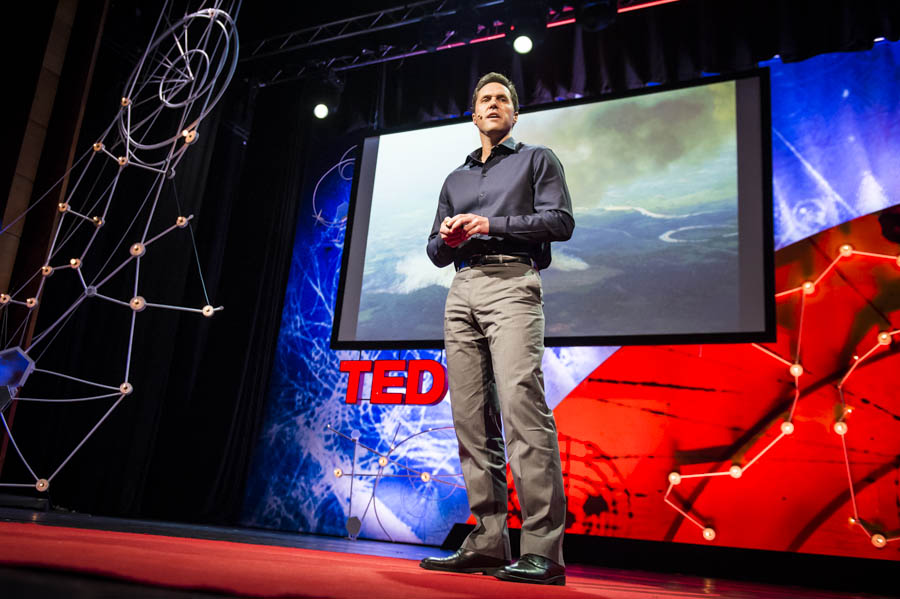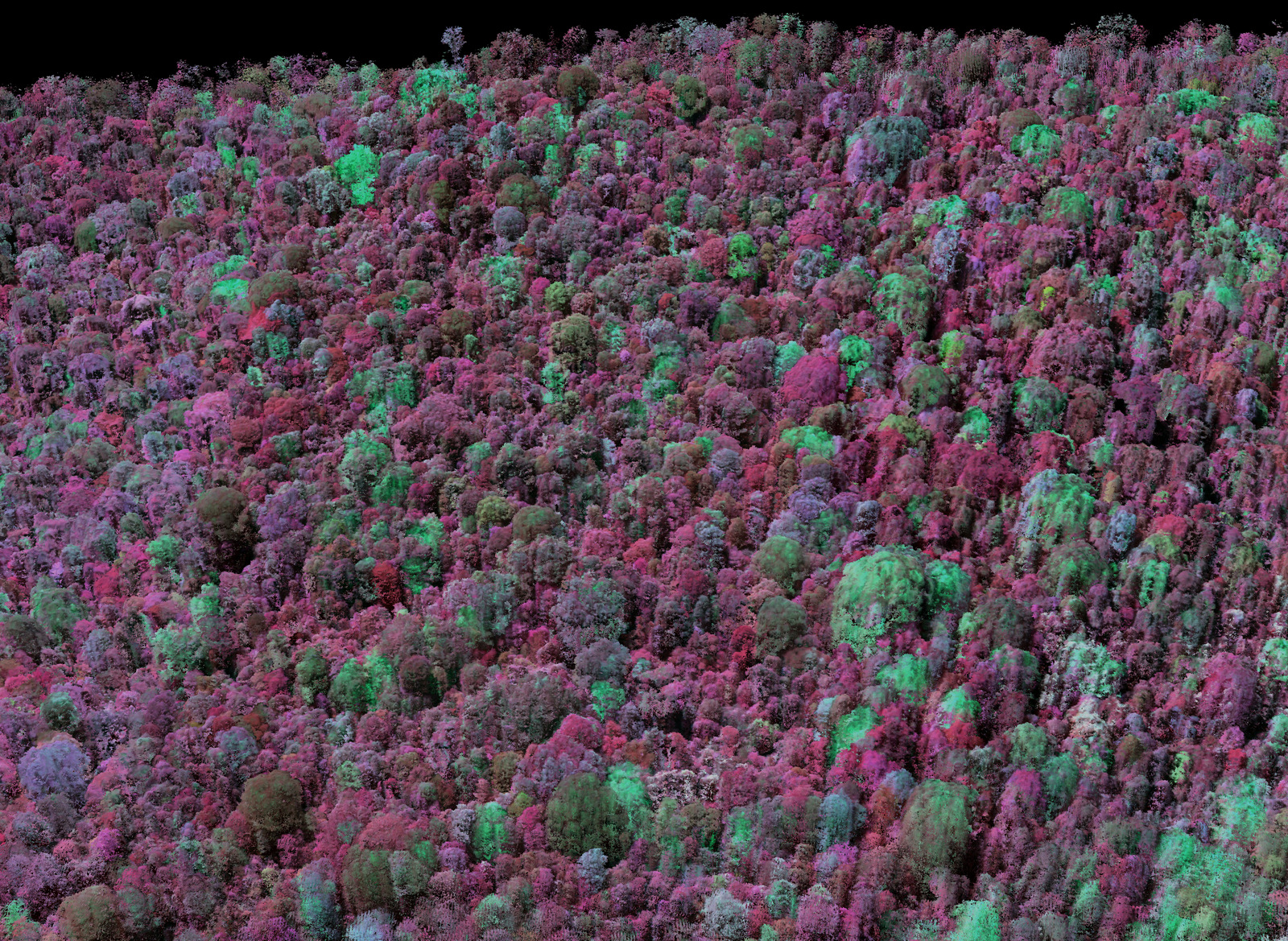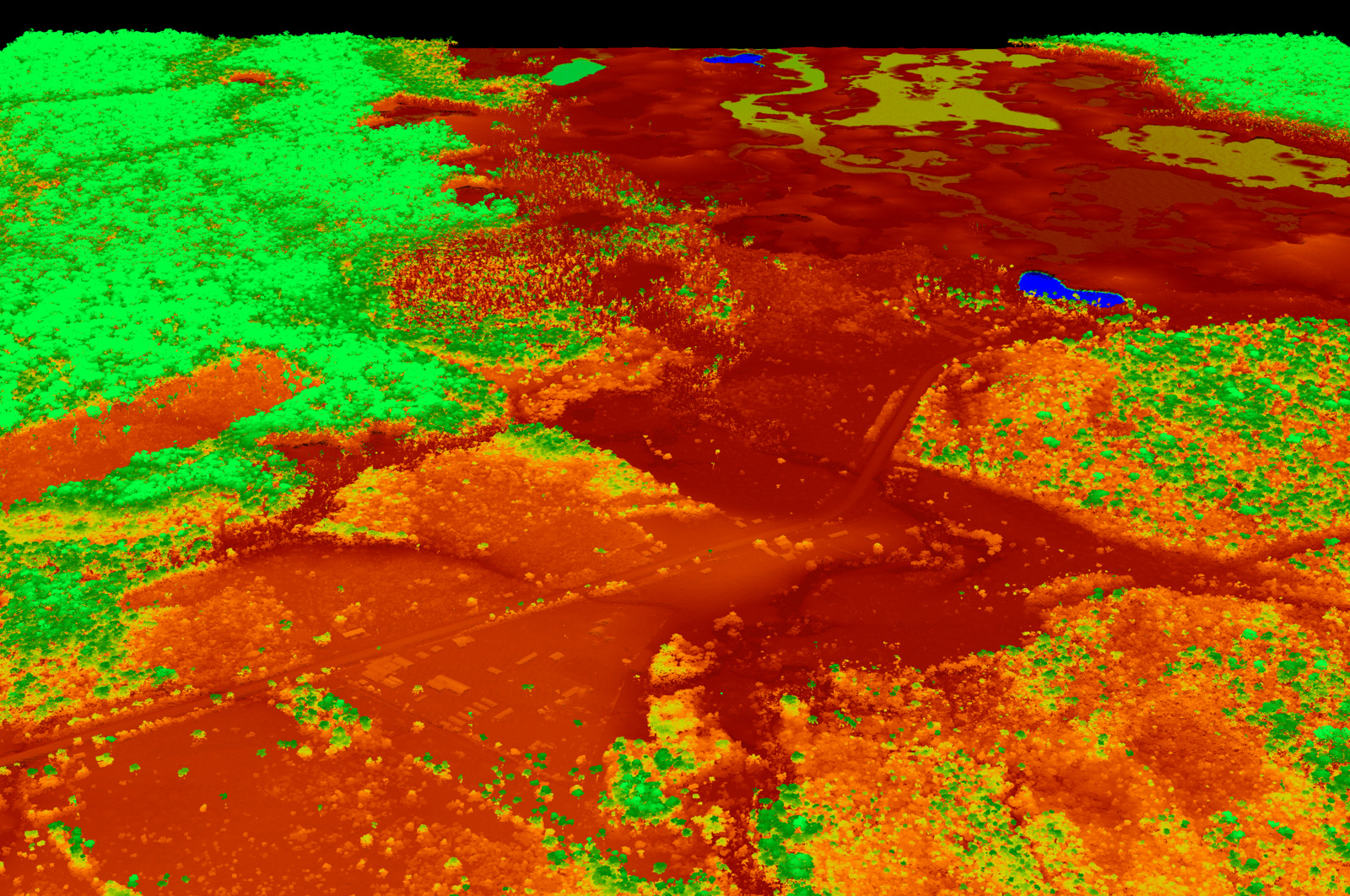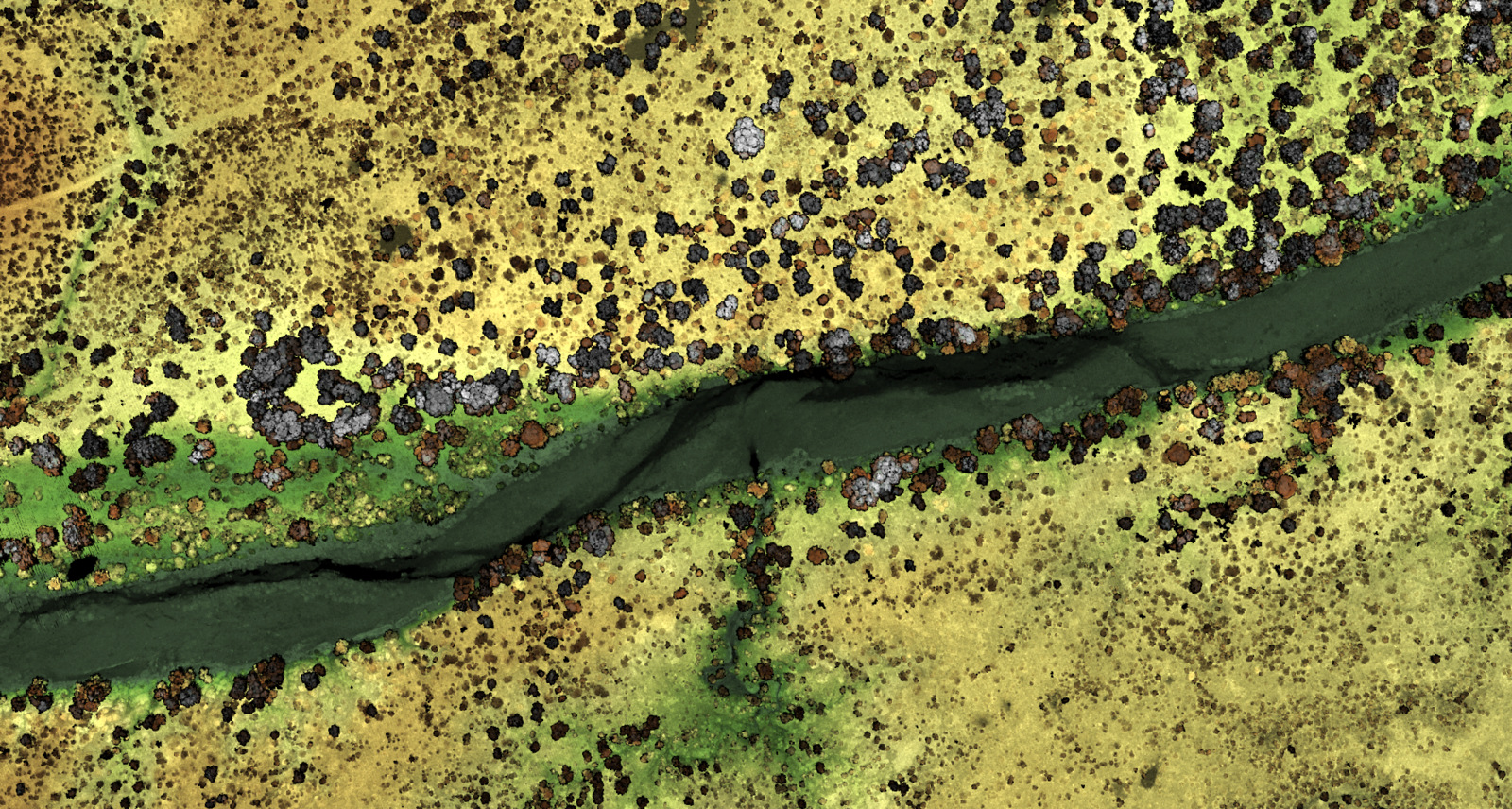Greg Asner closes Session 2 of TEDGlobal 2013, “Those Flying Things,” with a very different vision of the Earth. We spend a lot of time, money and resources conserving nature, yet, as Asner points out, we know absurdly little about it. Which is why, in an effort to advance our knowledge about biodiversity, he founded the Carnegie Airborne Observatory (CAO). The CAO uses laser scanning systems and two imaging spectrometers to image the Earth in 3D, capturing landscapes in extremely sharp chemical and biological detail. The CAO, in essence, captures the building blocks of ecosystems.
Asner asks and answers three questions about his work:
1. How do we manage our carbon reserves in tropical forests?
Tropical forests contain vast amounts of carbon stocks, and they need to stay there to prevent global warming from getting worse. Carbon emission levels from deforestation are now so high that emissions equal all the carbon emissions from the global transportation sector. The challenge for governments is targeting exactly where the carbon is in all these forests. In this case, CAO basically serves as a very high-tech accounting system, cutting the forests into millions of slices, mapping landscapes by the density of its carbon stocks.
2. How do we prepare for change in a place like the Amazon rainforest?
The Amazon was so dry in 2010 that the main stem of the Amazon River itself dried up, to devastating effect. CAO imaging was able to reveal that the droughts were causing widespread damage in remote areas, and that climate change seemed to be forcing species to migrate across vast distances. In addition, CAO allowed Asner and his team to digitally remove the forest, exposing clandestine gold miners.
3. How do we manage biodiversity on the planet and help the ecosystem?
With so many species under protection, park managers are under duress to manage systems in ways that can support multiple species. Fires and elephants alike can take their toll on parks and have detrimental cascading effects for many species. How can they be managed? In response Asner and his team are mapping every tree in the Savanna, then seeing which trees have been pushed over by animals. This allows park managers to make better decisions and pinpoint where species need the most help.
Asner believes strongly that technology is the key to helping us answer the question: How can we save places we know so little about? — and contribute to someday making the question obsolete.
Greg Asner’s talk is now available for viewing. Watch it on TED.com »




Comments (21)
Pingback: To solve climate change and biodiversity loss, we need a Global Deal for Nature - Rising Powers
Pingback: Library Link of the Day: To solve climate change and biodiversity loss, we need a Global Deal for Nature | Pacific Grove Unified School District
Pingback: Para resolver el cambio climático y la pérdida de biodiversidad, necesitamos un acuerdo global para la naturaleza ⋆
Pingback: To solve climate change and biodiversity loss, we need a Global Deal for Nature | Red, Green, and Blue
Pingback: To solve climate change and biodiversity loss, we need a Global Deal for Nature – Bergensia
Pingback: To solve climate change and biodiversity loss, we need a Global Deal for Nature | The Extinction Chronicles
Pingback: ClimateOfficials.com
Pingback: To solve climate change and biodiversity loss, we need a Global Deal for Nature – Menopausal Mother Nature
Pingback: To solve climate change and biodiversity loss, we need a Global Deal for Nature – Latest Online News Website
Pingback: Local weather change options 2019: a International Deal for Nature | InfoFisher
Pingback: To solve climate change and biodiversity loss, we need a Global Deal for Nature
Pingback: To solve climate change and biodiversity loss, we need a Global Deal for Nature – Wausau Pilot & Review
Pingback: The Himalayan News:: To solve climate change and biodiversity loss, we need a Global Deal for Nature
Pingback: To solve the climate change crisis, we need a Global Deal for Nature- Technology News, Firstpost - 195News
Pingback: Earth Day: Can the Sixth Extinction be Slowed?
Pingback: To solve climate change and biodiversity loss, we need a Global Deal for Nature – OnlineKhabar
Pingback: To solve climate change and biodiversity loss, we need a Global Deal for Nature – The Daily Angle
Pingback: To solve climate change and biodiversity loss, we need a Global Deal for Nature | DJG Blogger
Pingback: Mjerenje razine ugljika za spas tropskih šuma | Znanost Blog